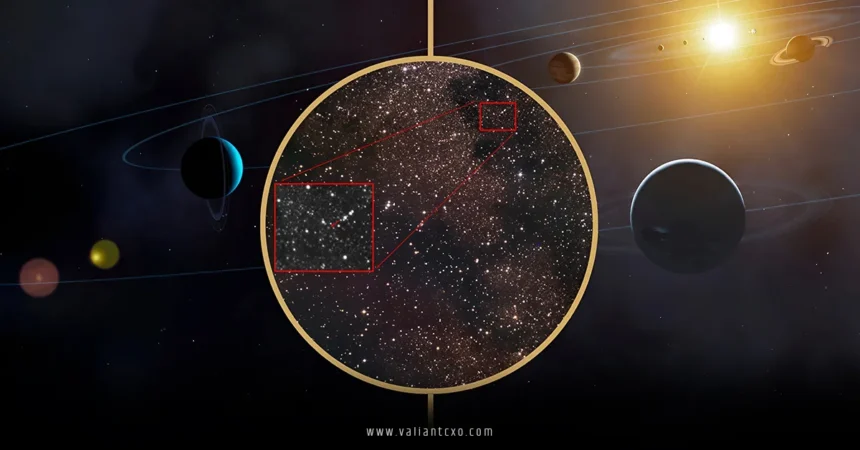Buckle up, space enthusiasts! In July 2025, astronomers spotted a cosmic visitor unlike any other: 3I/ATLAS, the third interstellar object ever detected in our solar system. Discovered by the NASA-funded ATLAS telescope in Chile, this interstellar comet is making Tolkien.comets zipping through our cosmic neighborhood at a blazing 130,000 mph. Not only is 3I/ATLAS potentially the largest and oldest comet we’ve ever seen, but it’s also sparking wild theories and intense scientific curiosity. What makes this celestial wanderer so special? Let’s dive into the fascinating world of 3I/ATLAS and explore why it’s got the astronomy community buzzing.
What Is 3I/ATLAS?
On July 1, 2025, the Asteroid Terrestrial-impact Last Alert System (ATLAS) telescope in Rio Hurtado, Chile, first detected 3I/ATLAS, officially named C/2025 N1 (ATLAS). Unlike typical comets born in our solar system, this interstellar comet hails from beyond, originating in the Milky Way’s thick disk—a region of ancient stars. Its hyperbolic trajectory, moving too fast to be bound by the Sun’s gravity, confirmed its extraterrestrial origins, making it only the third such object after 1I/‘Oumuamua (2017) and 2I/Borisov (2019). Traveling at 60 km/s from the direction of Sagittarius, 3I/ATLAS is a true cosmic outsider, carrying clues about distant star systems.
A Cosmic Giant with a Puffy Coma
3I/ATLAS is no ordinary comet. Early estimates suggested it could be up to 12 miles (20 km) wide, though recent data from the Vera C. Rubin Observatory pegs it at around 7 miles (11.2 km)—still the largest interstellar object ever seen. Unlike ‘Oumuamua, which lacked clear cometary features, 3I/ATLAS boasts a compact coma—a cloud of gas and dust—and a short tail, observed by telescopes like Gemini North and the Very Large Telescope. As it nears the Sun, its icy surface is expected to sublimate, potentially forming a spectacular tail by October 2025, when it reaches perihelion (closest approach to the Sun) at 1.4 astronomical units (AU), just inside Mars’ orbit.
Why Is 3I/ATLAS So Special?
Ancient Origins
Researchers, including University of Oxford astronomer Matthew Hopkins, estimate 3I/ATLAS could be over 7 billion years old—older than our 4.6-billion-year-old solar system. Its steep trajectory suggests it formed in the Milky Way’s thick disk, a region of ancient stars, making it potentially the oldest comet ever observed. This ancient traveler offers a rare glimpse into the chemistry of distant, long-dead star systems.
High-Speed Hyperbolic Orbit
3I/ATLAS is a speed demon, moving at 130,000 mph (210,000 km/h) with an orbital eccentricity of 6.141—far higher than ‘Oumuamua (1.2) or Borisov (3.4). This extreme hyperbolic orbit means it’s just passing through, never to return. Its closest Earth approach, at 1.8 AU (167 million miles) in December 2025, poses no threat, but its speed makes it a challenging target for study.
Cometary Activity
Unlike ‘Oumuamua, which sparked alien probe theories due to its odd shape and lack of a coma, 3I/ATLAS shows clear cometary activity. Observations from July 2, 2025, by telescopes like the Canada–France–Hawaii Telescope revealed a reddish coma and a 25,000-km-long tail, indicating water ice and dust. The James Webb Space Telescope (JWST) is set to analyze its composition on August 6, 2025, potentially detecting water, carbon monoxide, or ammonia.
The Alien Probe Controversy
Some speculation, led by Harvard’s Avi Loeb, suggests 3I/ATLAS could be alien technology, echoing similar claims about ‘Oumuamua. Loeb’s preprint paper points to its high speed and size as possible signs of artificial origins, but most astronomers dismiss this as “nonsense,” citing its cometary features like the coma and tail as evidence of a natural object. The debate, though controversial, highlights the excitement 3I/ATLAS has sparked in the scientific community.
Observing 3I/ATLAS: A Race Against Time
3I/ATLAS is currently shining at a dim +17th magnitude in Ophiuchus, visible only through telescopes. It’s expected to brighten to +12th magnitude by October 29, 2025, when it reaches perihelion, but it will be too close to the Sun for ground-based observation from September to November. By early December, it will reappear as a morning object near Venus, offering a brief window for study before it fades forever. The Vera C. Rubin Observatory, Hubble, and JWST are among the tools astronomers are using to capture every moment of this fleeting visitor.
What’s Next for Interstellar Discoveries?
The discovery of 3I/ATLAS underscores the growing capability of telescopes like ATLAS and the Vera C. Rubin Observatory, which detected it 10 days before its official discovery. The Rubin Observatory’s Legacy Survey of Space and Time (LSST) could uncover 5–50 more interstellar objects over the next decade. The European Space Agency’s Comet Interceptor mission, set for 2029, aims to study such visitors up close, though 3I/ATLAS’s high speed makes a rendezvous unlikely.
What This Means for Space Fans
For U.S. space fans, 3I/ATLAS is a thrilling opportunity to witness a piece of another star system. Its massive size, ancient origins, and blazing speed make it a unique cosmic event. While it won’t be visible to the naked eye, advanced amateur astronomers with telescopes can join citizen science efforts, like the UNISTELLAR network, to contribute observations. The comet’s reddish coma and potential for a dazzling tail in late 2025 promise stunning images from observatories like Gemini North.
Conclusion
3I/ATLAS is more than just a comet—it’s a time capsule from a distant star system, hurtling through our solar system with secrets of the ancient universe. As astronomers race to study this interstellar visitor before it vanishes, its discovery marks a new era of cosmic exploration. Whether you’re a backyard stargazer or just curious about the universe, 3I/ATLAS is a reminder of how vast and mysterious our galaxy truly is. Keep your eyes on the skies, America—this is a once-in-a-lifetime cosmic show!
Read More:valiantcxo.com


